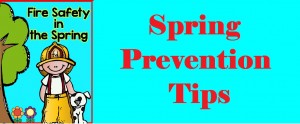 use
useTest your smoke and carbon monoxide detectors, change batteries immediately if needed. For more information check out our section on smoke alarm maintenance & carbon monoxide detector maintenance.
Check your fire extinguishers. For more information, check our section on fire extinguisher information.
Check for overloaded or damaged extension cords, replace where needed.
Ensure you have an emergency preparedness kit in case of incidents such as power outages and flooding.
Practice your families fire escape plan so everyone knows what to do in case of an emergency
Windows should be checked to ensure they open and close properly, in case they are needed as an exit
Properly store household chemicals and never mix cleaning agents
Recycle: Get rid of old newspapers, magazines and junk mail. These items tend to pile up and can greatly contribute to the severity and spread of fire.
Check and clean filters above stove.
Pull refrigerator out and vacuum or dust the coils.
Always keep stairs and landings clear for safe evacuation in event of an emergency.
Around the house

Maintain a clear ‘fire zone’ of 10′ around structures.
